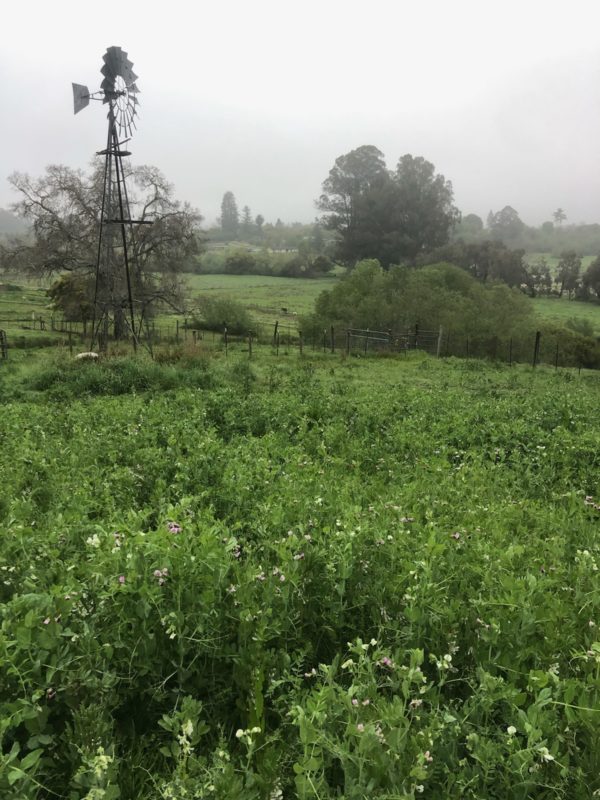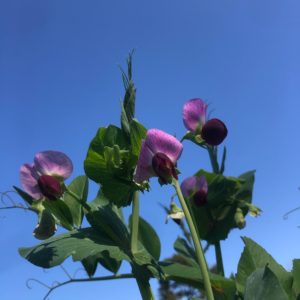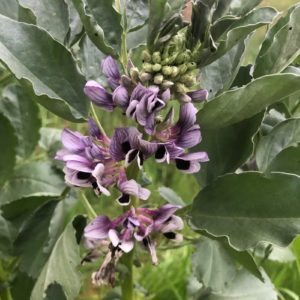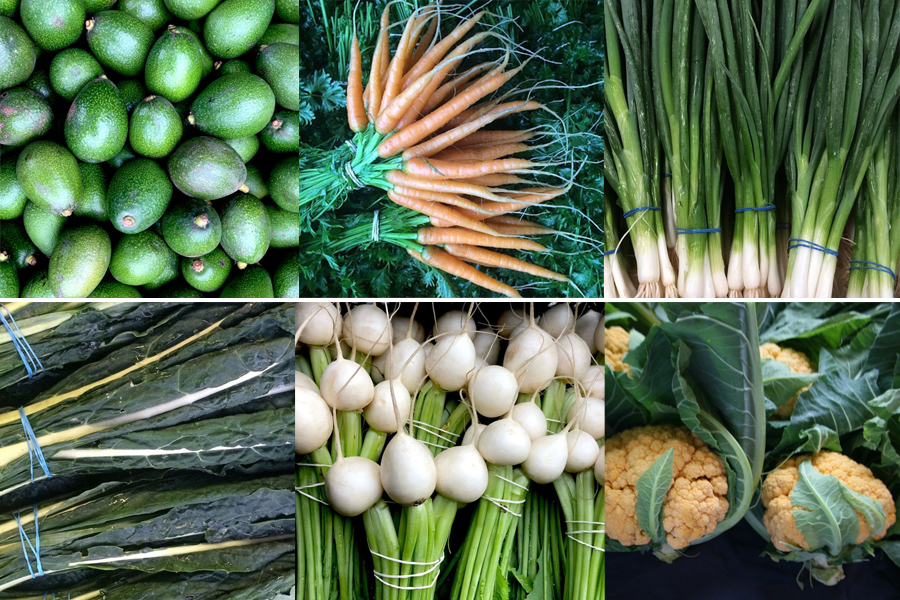Feed the Soil

The organic mantra is “feed the soil.” Feed the soil, and the soil will feed you back. The plants that we harvest are the alchemists that can transmute the base elements of the earth into our food by spinning minerals together with light and water to make leaves, fruits, and seeds. When the soil is rich our crops can thrive. Sometimes we think of the earth poetically as a giving mother who feeds us, but it’s also clarifying to think of the soil as a bank account; every harvest is a “withdrawal” of nutrients and if we don’t make deposits then, sooner or later, we run out of funds. So we try to care for the soil by putting at least as much back into the soil as we take out. But really, to only replace what we have withdrawn is a bare minimum concept of soil care; in a better world we improve the soils we depend on, and cover crops are one very basic way to do this.
 “soil builder” blend of cover crop seed. The idea is to “make a deposit of seeds” which then germinate and “accrue interest,” growing into a valuable crop of carbon and nutrients that can be “reinvested” by getting plowed under. There are grasses in the mix, like barley, oats, and rye. The grains germinate fast and first. And there are legumes in the mix; fava beans, vetch, and peas. The legumes sprout later than the grasses, and as the grasses grow taller the vining vetches and peas can lean on them in support. While the fava beans don’t need the grasses for support, they do benefit from the way the grasses act to break the winds that might beat them down.
“soil builder” blend of cover crop seed. The idea is to “make a deposit of seeds” which then germinate and “accrue interest,” growing into a valuable crop of carbon and nutrients that can be “reinvested” by getting plowed under. There are grasses in the mix, like barley, oats, and rye. The grains germinate fast and first. And there are legumes in the mix; fava beans, vetch, and peas. The legumes sprout later than the grasses, and as the grasses grow taller the vining vetches and peas can lean on them in support. While the fava beans don’t need the grasses for support, they do benefit from the way the grasses act to break the winds that might beat them down. and favas were killed by frost and the cover crop was almost pure rye, because rye is tough in the face of cold weather. This year, Starr and I tossed out the cover crop seed by hand, counting on the dark clouds overhead to rain our seed into the newly turned soil. But after we planted our cover crop the clouds left without raining and a flock of birds came out of the sky and pecked up most of the grass seeds we’d just sown. The birds moved on when they’d mined out most of the oats and rye but they didn’t care for the peas, vetches or fava beans, so our cover crop is mostly made up of legumes. We didn’t have a “wet” winter, but we got rain enough to support a flourishing cover crop. There’s a sweet scent in the air from all the blossoms. I’ll almost be sad to turn this crop under.
and favas were killed by frost and the cover crop was almost pure rye, because rye is tough in the face of cold weather. This year, Starr and I tossed out the cover crop seed by hand, counting on the dark clouds overhead to rain our seed into the newly turned soil. But after we planted our cover crop the clouds left without raining and a flock of birds came out of the sky and pecked up most of the grass seeds we’d just sown. The birds moved on when they’d mined out most of the oats and rye but they didn’t care for the peas, vetches or fava beans, so our cover crop is mostly made up of legumes. We didn’t have a “wet” winter, but we got rain enough to support a flourishing cover crop. There’s a sweet scent in the air from all the blossoms. I’ll almost be sad to turn this crop under.
© 2021 Essay and Photos by Andy Griffin.
Top photo is the cover crop on the farm. And below, are a few things we’re planning for this week’s mystery box! If you haven’t ordered a mystery box recently, now is a great time to get in on spring deliciousness! LadybugBuyingClub



